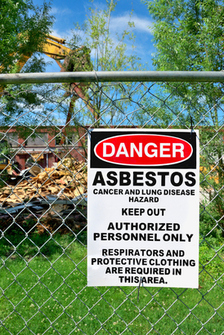 After numerous legal objections and obstruction by defense attorneys, an asbestos cancer victim’s trial against a talc-based product manufacturer appears poised to finally see a courtroom to determine what, if any, damages the plaintiff should receive as compensation for the defendant’s negligence. The high-profile case claims Johnson & Johnson’s Cashmere Bouquet talcum powder caused the plaintiff’s mesothelioma cancer because the product contained asbestos, a flaky white mineral once widely used in many industrial applications.
After numerous legal objections and obstruction by defense attorneys, an asbestos cancer victim’s trial against a talc-based product manufacturer appears poised to finally see a courtroom to determine what, if any, damages the plaintiff should receive as compensation for the defendant’s negligence. The high-profile case claims Johnson & Johnson’s Cashmere Bouquet talcum powder caused the plaintiff’s mesothelioma cancer because the product contained asbestos, a flaky white mineral once widely used in many industrial applications.
The asbestos cancer lawsuit, filed in the Philadelphia Court of Common Pleas, alleges that the plaintiff used the defendant’s talc-based products daily from 1954 to 1970 and developed the deadly lung cancer as a direct result. According to reports, the case will be the first time a Pennsylvania court takes up hard scientific issues over causation between using cosmetic talc-products and developing mesothelioma from talcum powder use.
However, this is not the first talcum powder-asbestos cancer case to go all the way to trial, with juries in New Jersey, California, and New York awarding plaintiffs multi-million dollar verdicts to compensate them for the negligence of talcum powder suppliers and cosmetics companies. Other juries have hit Johnson & Johnson with massive plaintiffs verdicts finding the pharmaceutical and cosmetic company liable for victims’ ovarian cancer caused by the talcum powder itself.
 Asbestos & Mesothelioma Law Blog
Asbestos & Mesothelioma Law Blog









